We want you to forget what your history books told you. They usually tell only one side of a story full of nuances. In this slideshow, you will learn about rare discoveries that showed the side of history that does not get told often.
They peel back all these layers of stories you might have heard of and expose seldom told facts that will surely fascinate. Are you ready to hear the truth about events in history that you think you already know about?
A Mummified Monk Inside A Buddha Statue
In 2015, researchers from the Netherlands performed a CT scan on a sitting Buddha statue. Inside, they found things that they did not expect at all. The statue came with a mummified monk who had been in there for a millennium. Inside of simply putting the monk in there, researchers found out that he was full of scraps with Chinese characters on them. To mummify himself, the monk must have been placed on a special diet of toxic tea that would ensure that his body would become too toxic to be infested by maggots. Not many monks did this, but those who did were revered in their community.
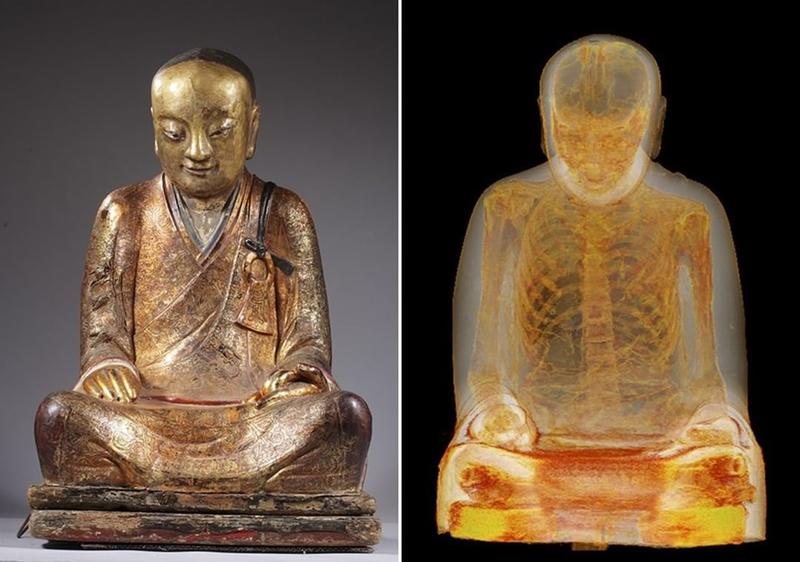
A Green Stone Mask In Teotihuacán, Mexico
This curious green serpentine mask was found at the base of a Mexican pyramid in 2011. However, this was not the only thing the archaeologists saw there. They found the loot at the Teotihuacan Pyramid of the Sun, and it is believed that it was hidden there as an offering 2,000 years ago. Together with the mask, they found pottery and obsidian pieces right next to the human figurines of the same material. Archaeologists believe that the mask had been part of a ceremony since it was next to another offer.
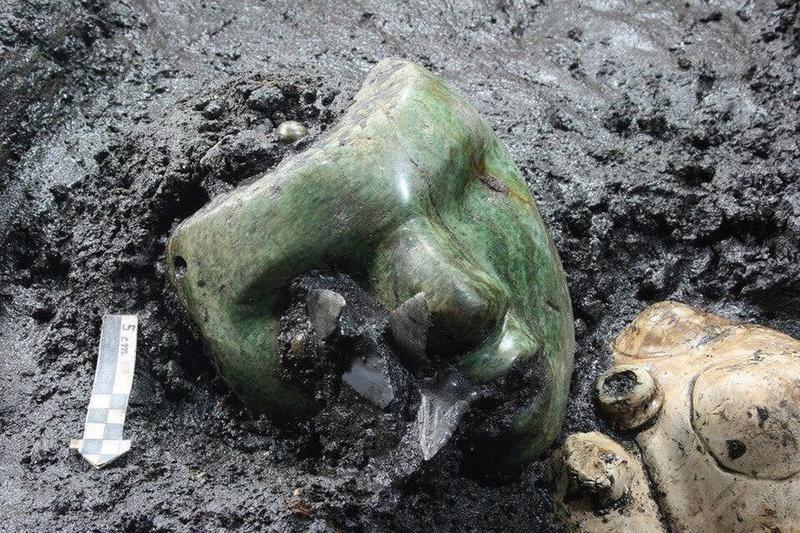
An Ottoman Supply Train Of The Hejaz Railway In The Desert
There were a lot of incredible feats of bravery that happened during the Great War. One of the most famous ones was that of T.E. Lawrence, better known as Lawrence of Arabia. He had been posted in the Middle East in 1917 when he started to topple the trains serving the Ottoman supply chain with a crew of Arabs. When the war came to a close, they had destroyed so much railroad and trains that they could no longer be used. Instead of moving the vacated trains, the Turkish people just abandoned them there.

Giant Japanese Spider Crabs
We know that these creatures look like they came straight from a ‘50s B-Movie, but we promise you that they are real. The crustaceans are found in the ocean near Japan, and they hold the record for the longest leg span of an arthropod. They are considered to be delicacies and can go as long as 18 feet! The crab itself can weigh as much as 42 lbs. You do not hear about them often since they reside in very deep holes in the ocean. They are only caught when they go looking for food outside their habitats, but the population has suffered greatly because of overfishing. This photo dates from 1904.
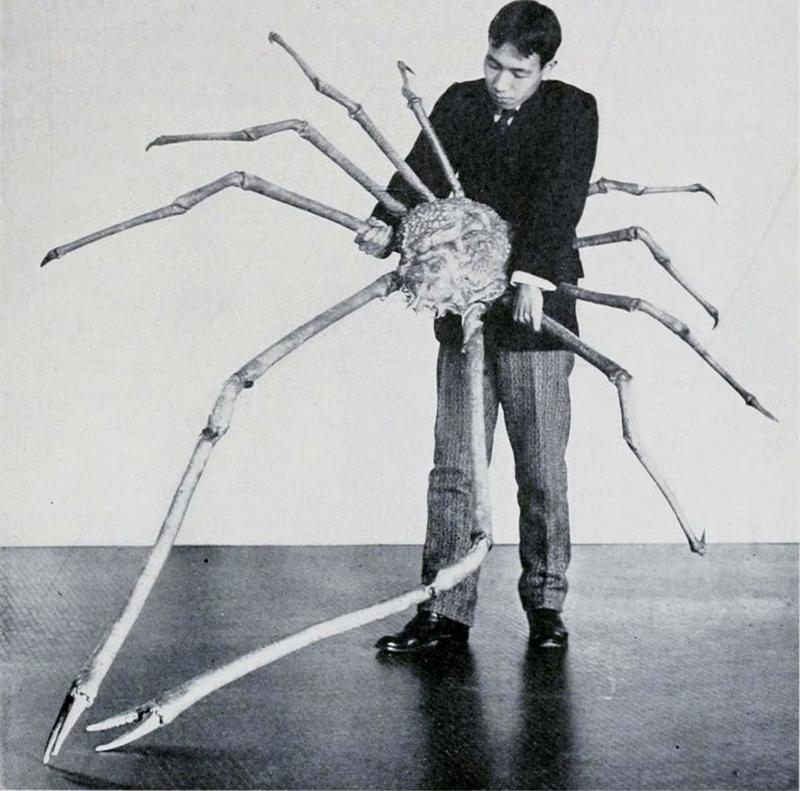
Holy Roman Emperor Maximillian I Wore Armored Gloves Until His Death
These gauntlets were worn by Holy Roman Emperor Maximilian I. They are a type of glove donned by knights and soldiers from different parts of the world during the Middle Ages. The metal gloves kept their forearms and hands safe, which was important as they are vulnerable in melee combat. There are different types of gauntlets, but these might be the most beautiful ones we have ever seen. These “war gloves” were made of leather, iron, or chain mail. This specific pair had been reportedly used by Maximillian I until he died in 1519. Did he wear them all the time or ever “threw down the gauntlet”? We do not know the answer to that one just yet.

The First Sunglasses Were Made By The Inuits
Many folks out there consider the sun to be the worst enemy of their eyesight, and for good reason. The first ones to use sunglasses had been the Inuits, who trudged through the snow over 4,000 years ago. The snow goggles prevented ultraviolet light from damaging their eyes and kept them from getting snow blindness. They invented the hand-carved goggles and left tiny slits so that they could still see through them. The thing that impressed modern researchers was that they did not fog over despite the polar conditions. The only drawback would be the fact that they significantly limited the vision of the wearer.
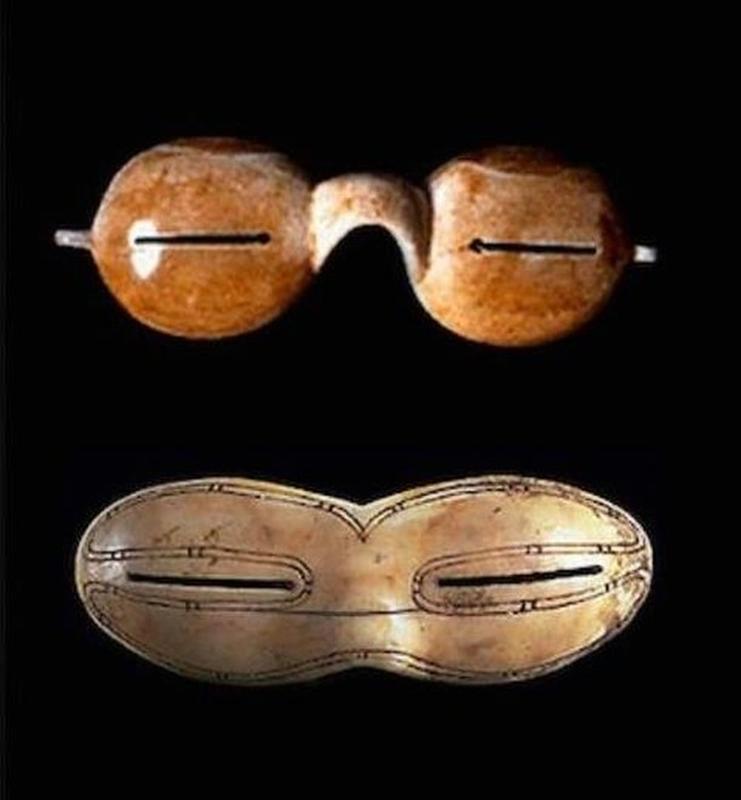
Bernhardt Otto Holtermann With His 630-Lbs Gold Nugget
Bernhardt Otto Holtermann was born in Germany in 1838. He was a prospector who owned part of a claim in which rich gold veins were found after dry digging for years. He left for Sydney, Australia in an attempt to avoid service in the military. He spent years on end digging and was mostly unsuccessful. There was even a time when he blew himself up when the blasting powder exploded prematurely. This photo shows him right next to a huge “nugget” and was taken by an unnamed photographer right before he got elected to be a member of the St. Leonard’s parliament in 1882. He died at the age of 47.

This Incredible Watch Was Made For Marie Antoinette
This is truly a pocket watch befitting of a Queen. The ornate watch had been commissioned by a mystery suitor of Marie Antoinette in 1783. They did not cut corners since they used gold instead of lesser metals. Overall, it must have cost him over $30 million! The gorgeous watch even came with a jumping hour hand, full calendar, 823 parts, and 23 complications. Considering these things, it is considered to be the 5th most complicated watch in history. The tragic part is that the recipient did not even receive the watch because it was only completed in 1827. That was 34 years after she had been guillotined!
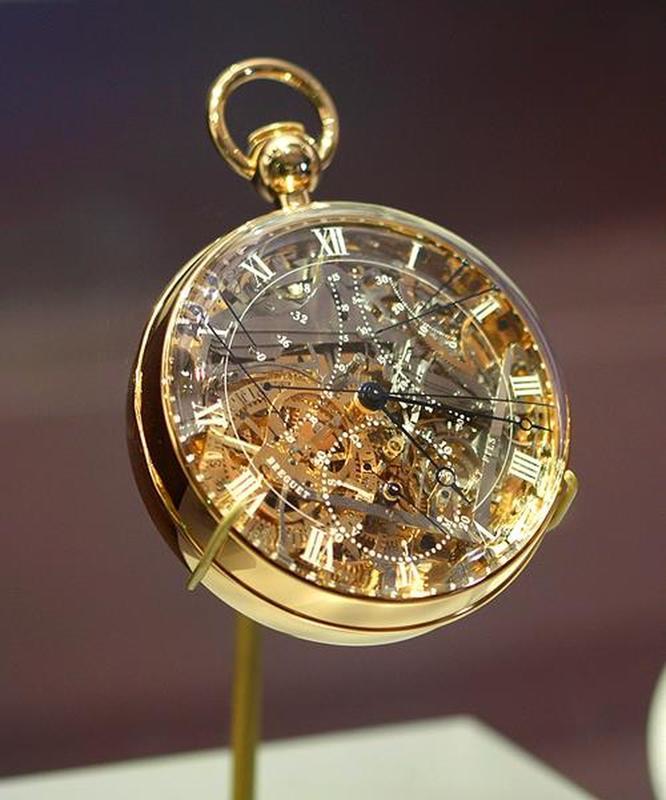
World War II Meal Rations Came With Gum And Cigarettes
Most people would gladly take a break to go eat lunch. However, we doubt that soldiers looked forward to this time of the day during the Second World War. Soldiers often had to eat a K-ration instead, and it did not do the trick for most people. With that said, the set is full of some truly fascinating things at the very least. The crackers inside were often combined with whatever tinned meat was in the ration so that the soldiers can eat an open-faced sandwich. They also got a single piece of chocolate to enjoy. The rations came with anywhere from 2,500 to 3,000 calories. While they were considered to be rather calorific for the soldiers, the problem was that they did not change throughout the war.

Antoine Fraveau Wore This Breastplate When He Died At The Battle of Waterloo
Antoine Fraveau had been in service to Napoleon during a skirmish at Waterloo. He was a young man when he was sent out to the field wearing this golden breastplate. Armor like this one had been very important to the soldiers of the 19th century since they protected one from blunt instruments and even swords. However, there was no way it could survive a cannonball attack! In 1815, he got blasted by cannon fire while in the middle of the fighting. He was reportedly getting ready for marriage before he died. This is an excellent way to demonstrate just how violent the Napoleonic Wars had been.
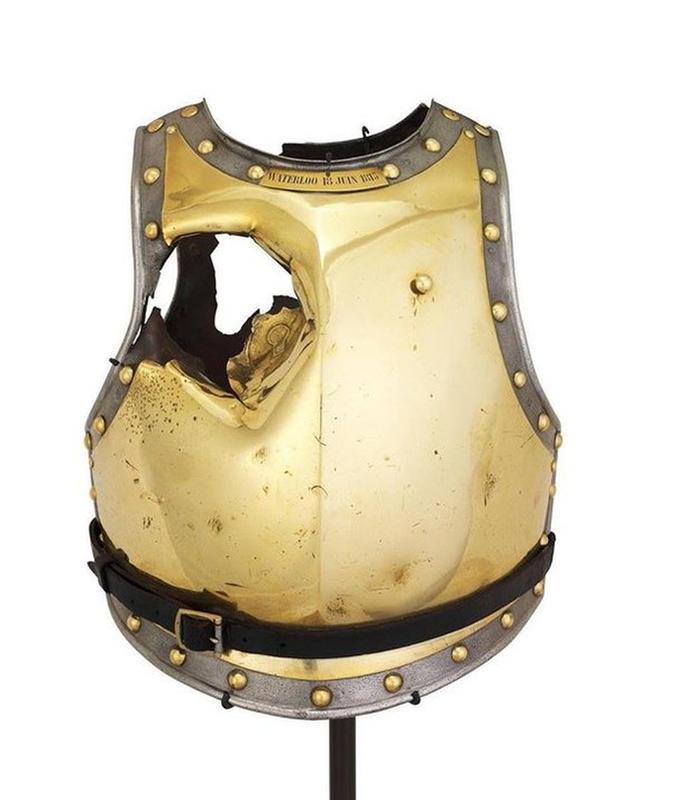
King Tutankhamun Wore Stylish And Royal Sandals
When people talk about ancient Egypt, the first things that come to mind would probably be mummies and pyramids. While they were important aspects of the culture, there is more to that period than that. The sandals worn by King Tut show that Ancient Egyptians were a lot like us than we thought. They did not only wear footwear similar to what we use, but they were also very interested in fashion. Ancient footwear expert André Veldmeije explained, “When footwear is mentioned in general books if at all, it is usually noted that sandals were flimsy and most people were barefoot all the time. Moreover, they say there were only a few types of sandals. This is a misconception, probably based on artistic depictions alone. The variety of footwear is much greater than imagery suggests and even includes shoes that are never depicted; we only know them from the archaeological record.”
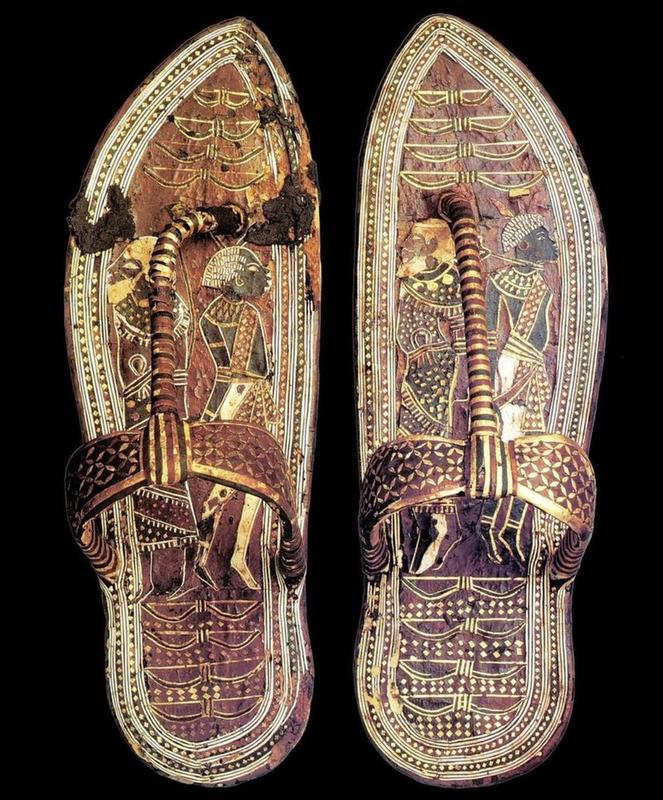
The Wreckage Of A Kittyhawk P-40 In The Sahara Desert
The Curtiss P-40 Kittyhawk was like the British Tomahawk, the American fighter jet that debuted during the Second World War. The P-40 came with an Allison in-line piston engine that was able to go up to a speed of 378 miles per hour. It could achieve an altitude of 15,000 ft in only 6 minutes and 42 seconds. However, the range was only 240 miles, which meant that it mostly functioned as a defensive plane. In June 1942, the Kittyhawk flown by 24-year-old Flt. Sgt. Dennis Copping crashed in the North African desert, 200 miles away from the closest town. It remained there undisturbed until a Polish oil company worker found it in May 2012. Unfortunately, the fate of the pilot remains a mystery to this day.

The Cau Vang Golden Bridge Sits On Two Massive Stone Hands
Vietnam is, without a doubt, one of the most interesting yet unexplored countries in the Eastern hemisphere. Big cities like Hanoi are located right beside dense jungles, so tourists can visit many sites in only a couple of days. One of the most fascinating architectural structures across the country would be the Cau Vang Golden Bridge. It is a long bridge held up by a pair of huge stone hands. It was designed by TA Landscape Architecture and can be found atop the Ba Na Hills, close to Da Nang. Visitors can visit it without a problem, but they will need to ride a cable car to get to the top of the hill.

A Toaster From The 1920s
What could be better than a piece of toast? Some might even say that it is the best thing since… wait for it… sliced bread. After electricity was introduced, many fun inventions started to pop up everywhere. One such creation would be the early toaster in this photo. It can do what your toaster does, but it does the job differently. It does not toast both sides at the same time but only heats a single side of the bread each time. The users need to watch the bread to ensure that it is just as crispy as they want. Once they do that, they will flip it over and toast the other side to do the same thing.
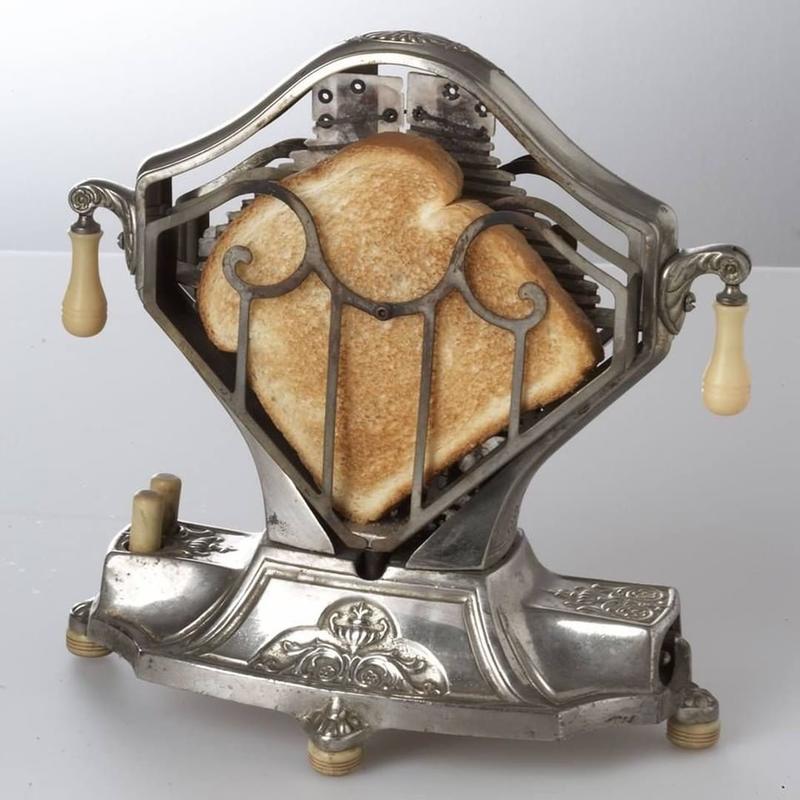
Leon Panetta Offered To Open A $10,000 Bottle Of Wine For Osama Bin Laden’s Head
After the terrible events that went down on September 11, 2001, Osama Bin Landen was considered public enemy number one of the West. Everyone wanted to locate the Taliban ringleader and enact justice to restore the honor of the country. We know that there was at least one restaurateur who put a bounty on his head. Ted Balestreri of California jokingly said that he would open his 141-year-old Chateau Lafite Rothschild bottle with the US Secretary of Defense if they contributed to the death or capture of the terrorist. After Bin Laden was taken down in 2011, the restaurateur said that it would be his honor to uncork the bottle as part of the celebration.

This 16th Century Ring Turns Into An Astronomical Sphere
This 16th-century ring can unfold into a geometrical shape and is mind-boggling if you think about it. This intricate ring was designed to be worn around a finger as it folds out into several smaller rings. How fascinating is that? The maker of the ring must have spent days, maybe even weeks, to ensure that this incredible piece of jewelry works this way. Of course, it is also possible that they first made several prototypes before they arrived at just the right configuration. Maybe they even had to come up with a detailed blueprint before they started the actual construction of the ring.
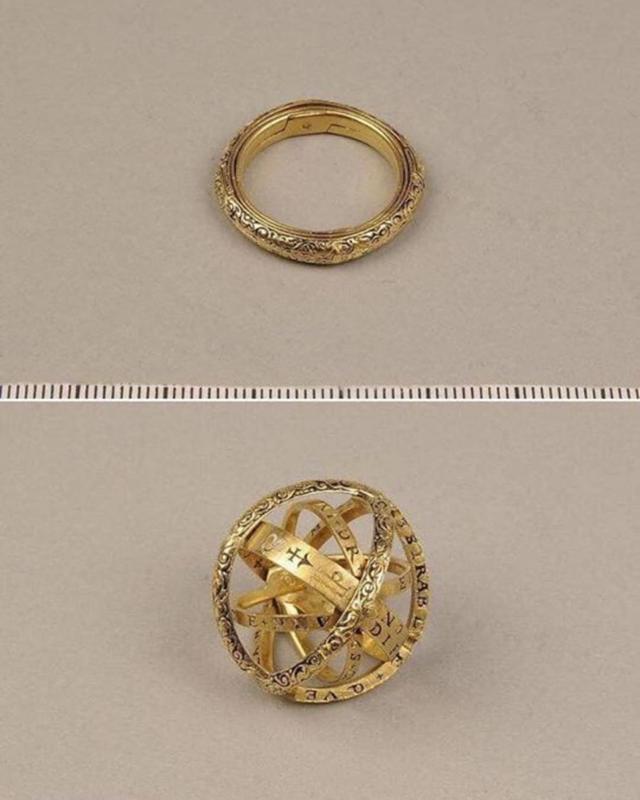
The Oldest Working Astronomical Clock Is In Prague
The Prague Astronomical Clock is among the oldest fully functional astronomical clocks in the world! This means that it can tell the time and display more information about the moon, sun, planets, and even zodiac constellations. It is also called the Orloj and had to be made with numerous layers to add the time and locations of the astronomical bodies. Aside from showing the time, the main face of the clock also features glyphs showing ancient Czech time and Roman numerals showing 24-hour time. The face comes in different shades of blue and red to represent the different parts of the day. At the center of the dial, you will find the Earth. How gorgeous is that?

Preserved Boot Found In The Altai Mountains
The preserved woman’s boot in the photo was made 2,300 years ago. It has remained intact so well thanks to the freezing temperatures at the Altai Mountains. It has been preserved so well that it could pass for something on display at a bohemian store. The boot has been traced to 300 BCE! It was made using leather and shows different decorations made with different textiles such as gold foil, pewter, glass beads, and pyrite crystals. It is a fascinating discovery that shows us how stylish people always were no matter the period. We are sure that some of you would willingly wear this!
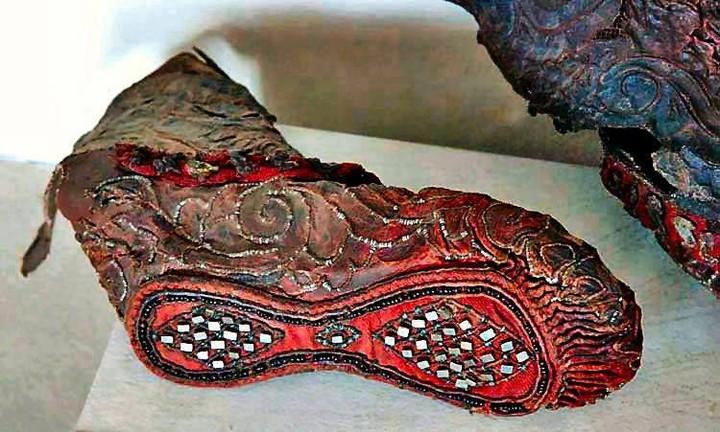
Incredible Meteorite Pieces Found In The Mountains Of Fukang
In 2000, the Fukang Meteorite was found in China. It is one of the most incredible interstellar bodies ever found on the planet. An unnamed hitchhiker saw the meteorite outside Fukang, a town in the northwestern region of Xinjiang. The space rock is made of Pallasite, which is recognizable for the olivine crystal pieces embedded in an iron-nickel matrix. When lit from the back, the slices of the meteorite look like stained glass windows! Scientists have yet to find out the origins of the material, but they believe that the meteorite was formed around 4.5 billion years ago. Whoa.

This Music Typewriter Had A Circular Keyboard With 33 Keys
The Keaton Music Typewriter was patented in 1936 and came with 14 keys. By the ‘50s, it received an update and started to feature 33 keys! The typewriter worked by putting a sheet below the typing mechanism and then the notation marker would begin to type. It might sound complicated, but the truth was that the musical typewriters made it easier to write sheet music. However, it was important for the composer to work very carefully since they needed to start over with a new sheet if they made a mistake. The machine had 3 space keys that let users move the typehead through the units.

Ladder 3 Was Driven By First Responders During 9/11
First responders during the World Trade Center attacks on September 11, 2001, charged into the disarray and chaos of that tragic morning. A lot of them did not make it out of there. There is now a piece of equipment standing as a monument to the courage they displayed: Ladder 3. Captain Patrick Brown and firefighters drove it, but they did not survive when the North Tower fell on the front of the truck. That part of the vehicle had been ripped off as the structure collapsed and had been left to fester in the mess. After cleaning up that area, that truck was put in a hangar at the JFK International Airport but was later relocated to the Memorial Museum in 2011.

Whiskey Legend Jack Daniel Died After Kicking His Safe Out Of Frustration
Wow, talk about a way to go. Alcohol industry legend Jack Daniel died after an ordeal with his safety in Lynchburg, Tennessee on October 9, 1911. The safe did not fall on him nor did he try detonating it with dynamite. No, he wanted to fetch paperwork inside of it but could not remember the code! He started to kick it, which did not do anything but give him an infection on the big toe. It later turned gangrenous and then spread to the other parts of his body. The good thing was that he was able to turn the business over to Lem Motlow, his favorite nephew before he died from complications.
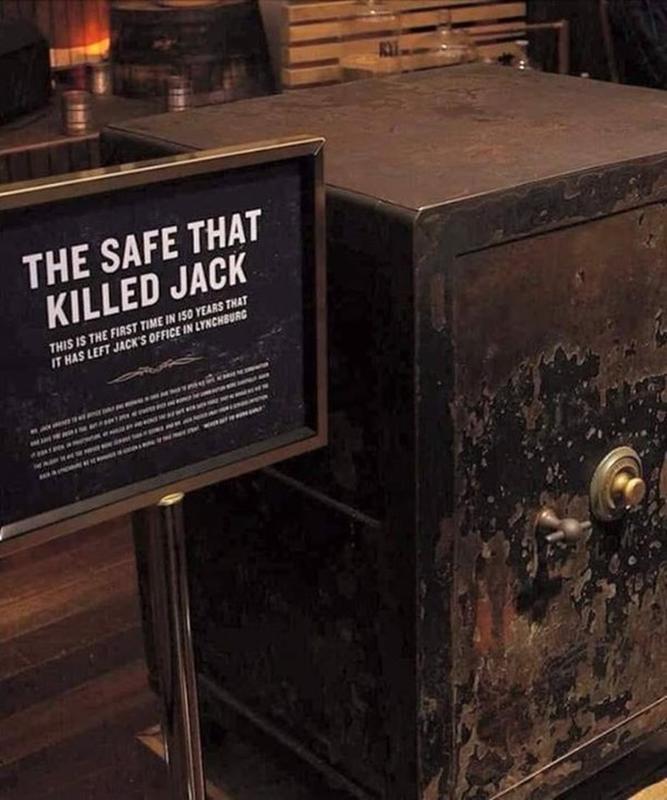
Artist Igor Loskutow Made A Wooden Dragon Bench Using A Chainsaw
We do not usually think of a chainsaw as something you use for precision cutting. However, Igor Loskutow was no ordinary man. A member of the Husqvarna chainsaw sculpture team, he traveled across the European continent to show off his incredible skill set. The stunning dragon bench was carved with the head and tail curling around where the viewer is supposed to sit. It is a great example of grace and precision! The bench got the top honors during the 2015 Huskycup World Title and rightly so! In 2017, Loskutow started to construct a similar bench but used different woods for a fiery effect.
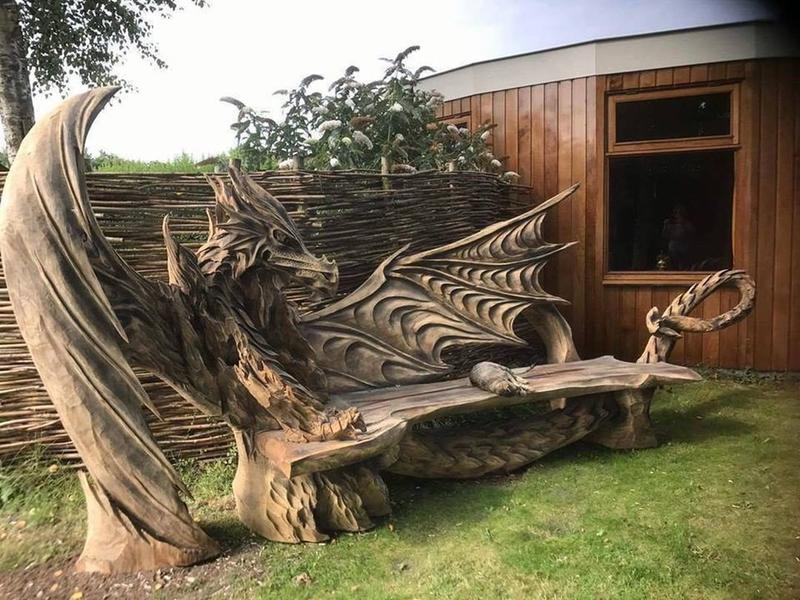
American Civil War Era Surgeon’s Kit
War zone medics are always in danger, which is why it is impressive that they can perform operations. They work under a lot of duress and typically have to work with limited equipment. This is even worse for a medical professional back in the Civil War. The medics did not only have a limited amount of resources, but they also had to work during one of the bloodiest conflicts the world has ever seen. The photo below shows us a well-stocked medical kit, but there is a good chance that a medic in the field needed to work with what medicine and material they had. We bet they hoped the brandy was strong enough for the person they were working on because it must have been very painful!
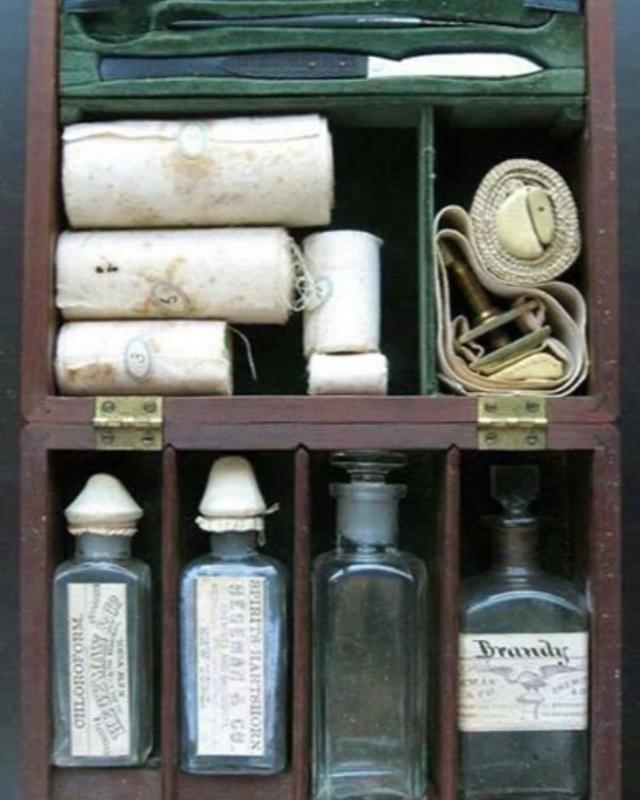
The Skull Of A Roman Legionnaire Who Died In The Gallic Wars
From 58 BC to 51 BC, the Gallic wars were fought by the Romans and the Gallic tribes of what is now France and Belgium. The Gauls were a formidable opponent, but there had been a lot of tension and infighting between the tribes that the Romans managed to defeat them through a bunch of vicious campaigns. The end of the war saw both sides suffering major losses. The Romans lost over 30,000 soldiers, and the Celts lost approximately 1,000,000 fighters in melee combat. On top of that, 800 towns had been destroyed!
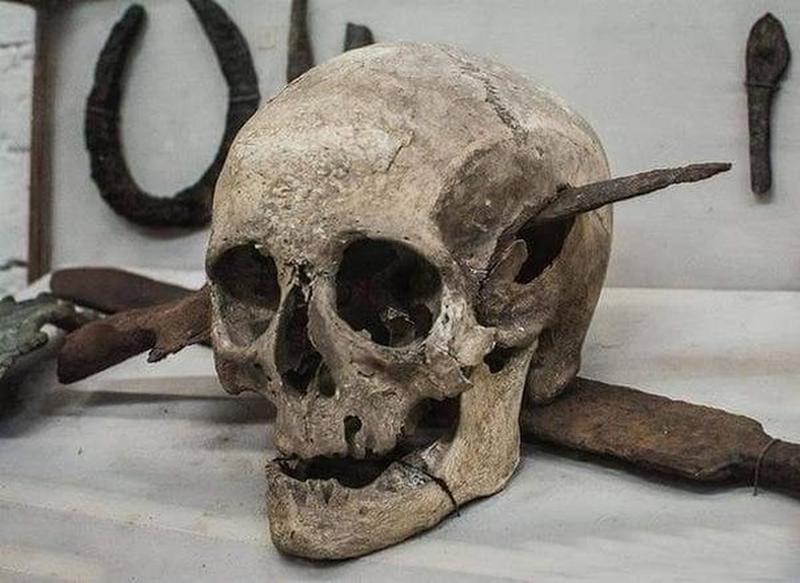
This 16th Century Boxwood Miniature Was Made In The Netherlands
This wooden box carving was made so perfectly that it blows our mind! Each detail is so intricate, and every piece seems like it would take an entire lifetime to accomplish. According to researchers, box carvings such as this one we’re meant to be status symbols used by wealthy Europeans 500 years ago. You will find religious scenes from the bible and depictions of life for various classes. Here was what art historian Eve Kahn said about it: “The works can be so rich that individual feathers are visible on angel wings, and dragon skins are textured with thick scales. Crumbling shacks are shown with shingles missing from their gabled roofs. Saints’ robes and soldiers’ uniforms are trimmed with nearly microscopic representations of buttons and embroidery, as well as jewelry and rosary beads.”

Gorgeous Necklace Created By Georges Fouquet In 1905
This art deco necklace was created by French jewelry designer Georges Fouquet in 1905. He was best known for intricate pieces and joined his father in the industry during the 19th century. In the 1900s, he started a shop of his own and became known for art nouveau necklaces like this one here. His works were more than just a fashion statement, and many of them are now on display at the Metropolitan Museum of Art in New York City and the Petit Palais in Paris. There is also a recreation of the shop at the Carnavalet Museum in Paris.
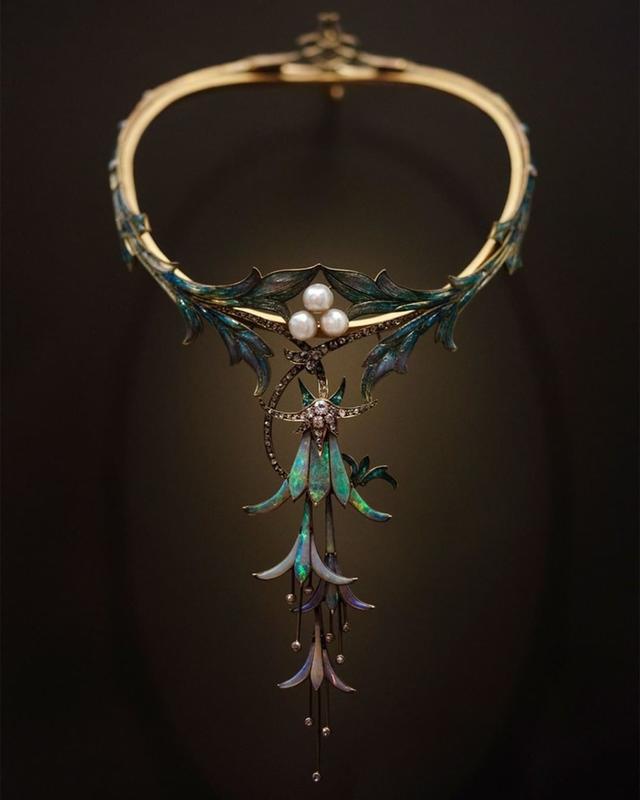
Massive Olmec Warrior Head Sculptures
The massive Olmec head sculptures are among the most famous tribal artworks in the world. They were found close to San Lorenzo and La Venta and provided some insight into a community that researchers knew little about. They do not only show the distinct physical attributes of the people, but they also took a lot of manpower to make. The statues were hand-carved using a basalt boulder, some of which had to be transported a hundred kilometers or even more to the final destination. It is already hard enough to fathom just how they were transported there, let alone chiseled away into this.
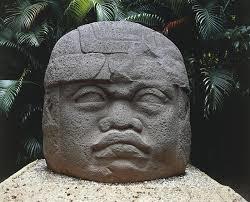
Quirky Silver Ice Cream Spoons Date Back To 1890
Everyone loves a gorgeous spoon! When you are eating or snacking on some ice cream, it is always nice to do so with such a whimsical and intricate thing. The spoons were made during the Victorian era, a time when everything was made to look more intricate and lavish than need be. The shell design of the spoon did not need to be there, but they knew that it was just important for this utensil to be pleasant-looking. The spoons can add levity to a sweet treat, which was something that the Victorians adored. In case you were wondering, a lovely design can make things a whole lot better.
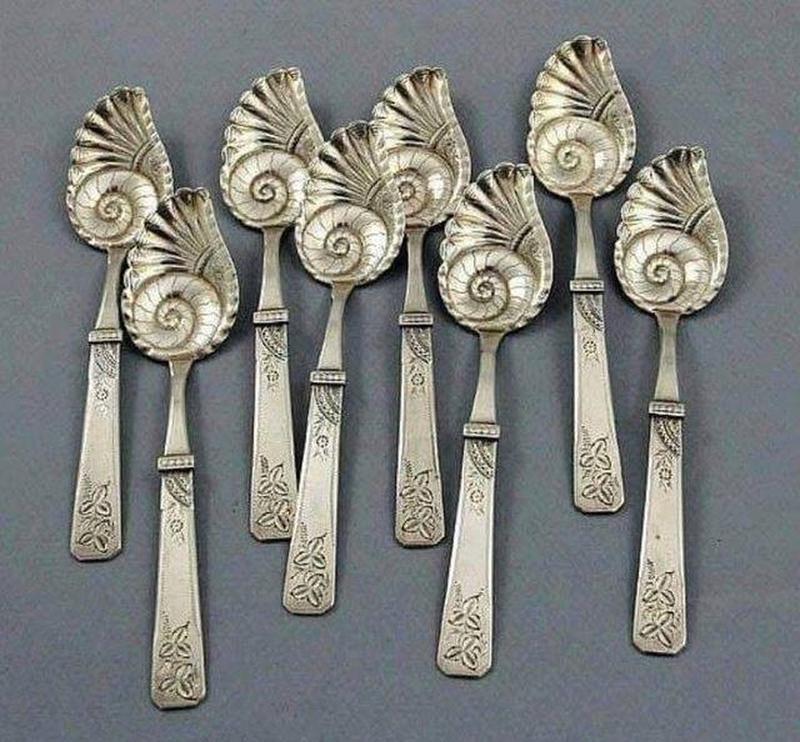
This 1867 Sewing Machine Was The First Of Its Kind
Walter Hunt worked on the sewing machine in his very own workshop on Amos Street in New York City from 1832 to 1834. The first iteration of the machine had been built by hand and came with a curved needle as well as a shuttle to interlock a stitch using two threads. The next 30 years would bring the sewing machine a lot of changes and updates that helped revolutionize the world of fashion. In those days, there were also a lot of copycat inventors who wanted to get their hands on the first patent on the machine. There was so much legal drama that it went on to be one of the most litigated inventions of the 19th century!
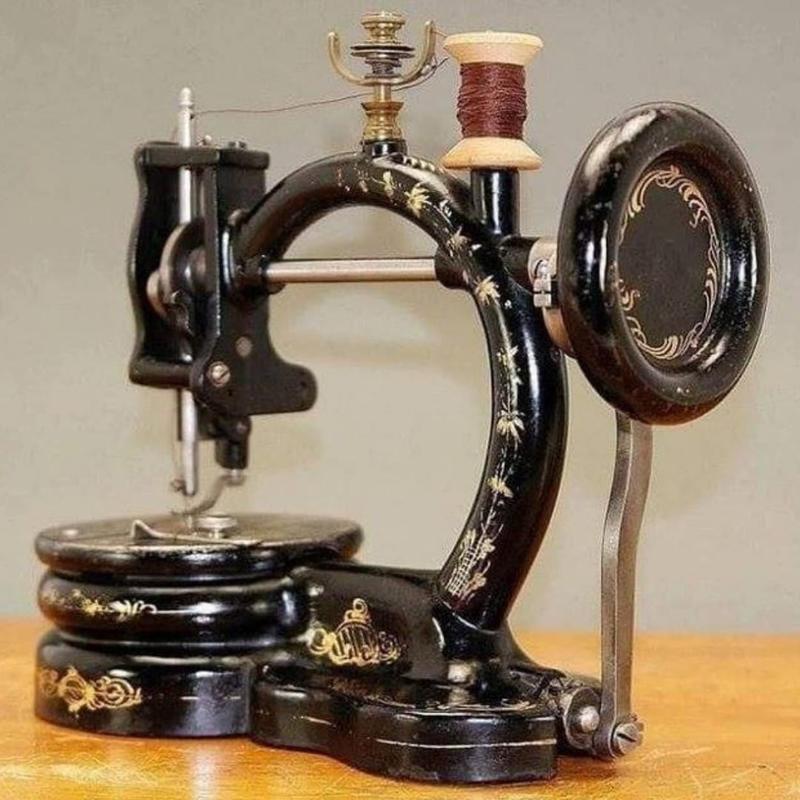
Wooden Skeleton Rocking Chair Was Made In Russia During The 19th Century
Truly, there is something macabre about skeleton rocking chairs, but they are comfortable. It is because they are handcrafted from gorgeous pieces of wood meant to last for a long time. The pieces of furniture go for thousands of dollars and can even go for more through certain auction houses. Newer versions of the chair are patterned after a 19th-century version that is about 54 inches high. The chairs were carved ornately to make it look like you are sitting in a skeleton. We can see why some would find it spooky, but this might appeal to those of you who are fond of gothic themes!
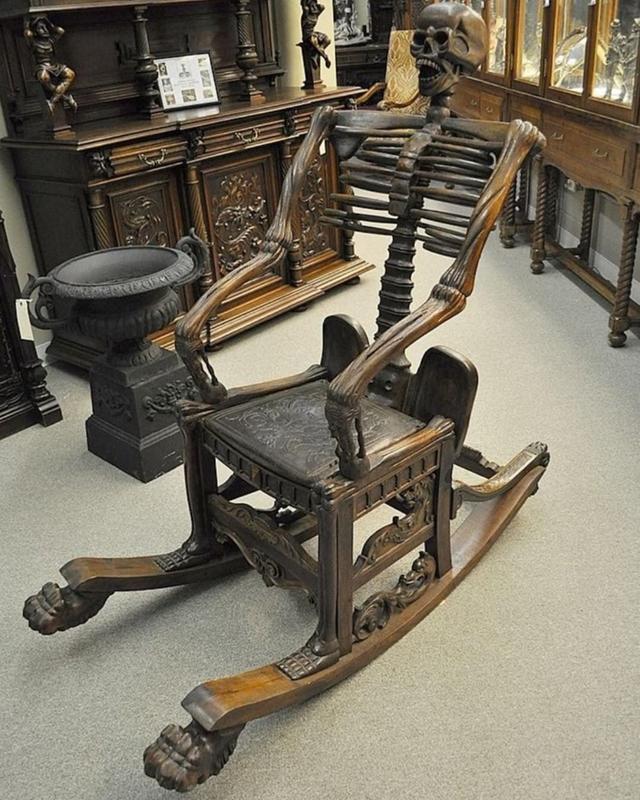
This Ornate Ax Was Made In Germany In The Late 1500s
The craftsmanship that it took to make the ax is inspiring. It makes us wish we were alive during the days when blacksmiths worked in their forges for hours on end. The short-handled ax boasts of many uses such as throwing or chopping, but there is something about this piece that makes us think that it was meant to be used for decoration. After all, how can you take such a beautiful thing with you into battle only to throw it at the enemy? There is a good chance that the owner would not get it back after that. We are sure that there are better tools out there for this job.
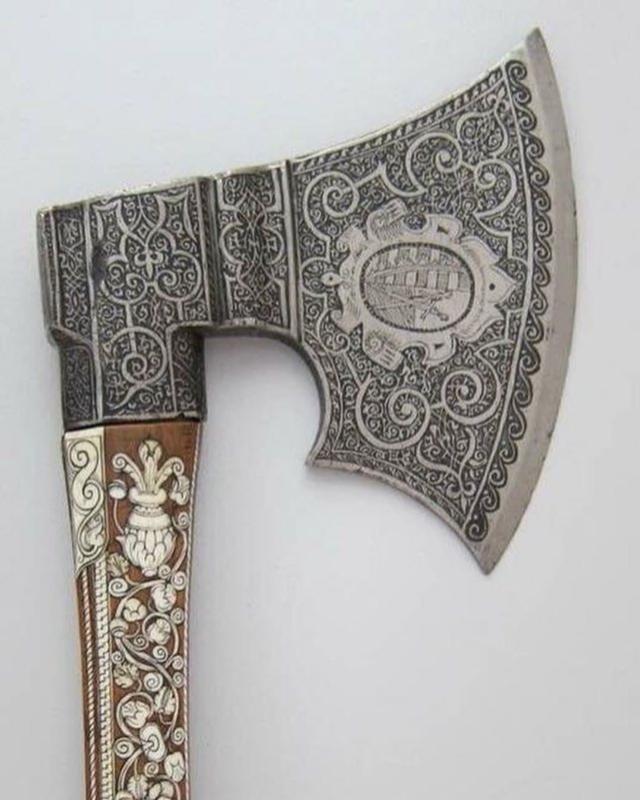
Carbonized Bread With Baker’s Stamp Survived The Vesuvius Eruption
It is common knowledge that Pompeii suffered destruction when Mount Vesuvius erupted in 79 A.D. The thick blanket of ash helped preserved a lot of people, homes, and artifacts, however. It is quite shocking to hear that so much stuff survived a burst of this kind. Take a look at this entire loaf of baked bread! The dense and round fresh loaf of bread has been cut into 8 individual pieces and comes with a baker’s stamp saying “Celer, slave of Quintus Granius Verus.” Honestly, it boggles the mind that a remnant of a tragic past has made it to the present! We don’t recommend tasting it, though.

Archaeologists Found A Thracian Carriage With Two Horses Buried Upright
It is difficult to see, but this is how they did things in ancient Bulgaria! Archaeologists found a whole carriage attached to the skeletons of two entire horses in a northeastern Bulgarian village called Svestari. The carriage came with 4 wheels, seats, and boot. There is reason to believe that they were owned by a Thracian noble. The horses must have been led through some narrow hole and had to be put out of their misery. This discovery is truly one of its kind. After all, it sounds highly unlikely that they will find anything better preserved than this incredible finding.

This Bat Lantern From The ‘30s Is Still Good For Modern Day Halloween
This is one of the quirkiest and cutest lamps we have ever seen! The 1930s piece was made using cast iron and shaped in the form of a bat. This is perfect for Halloween or any other time of the year if you like spooky stuff. In the modern age, it is not uncommon to simply throw away decorations after the season and buy new pieces the following year. However, families often made their décor or bought something that would last a long time back in the 1930s. We would love to put this bat up in our own home ourselves! We do not think that they make these things like they used to.
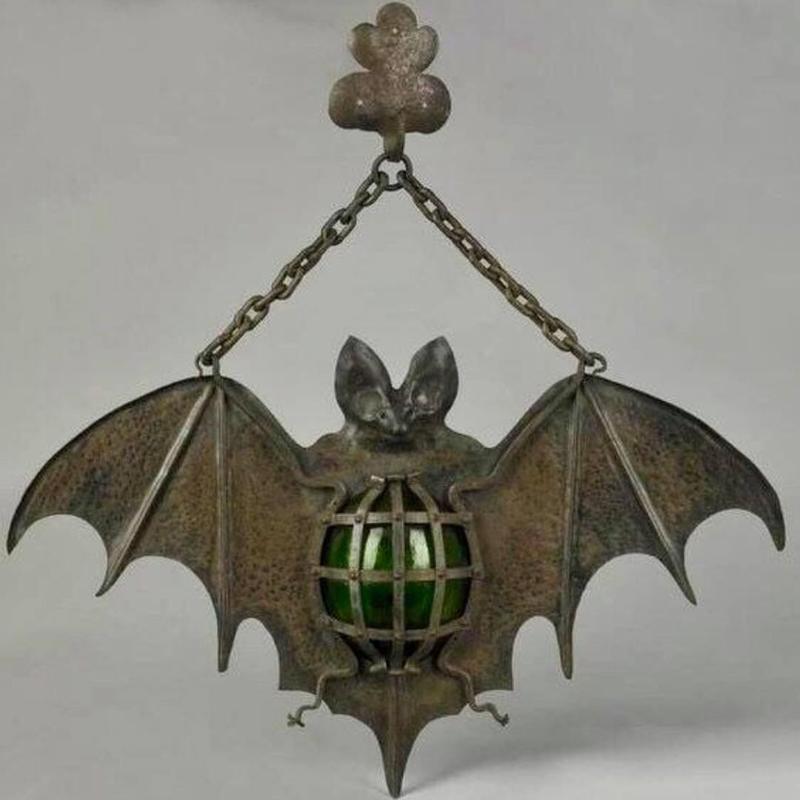
A Rare Gold Sundial And Compass Ring From The 16th Century
Do you want to know the time? If you had been alive in the 16th century, you needed to depend on the sun to know the answer to that. Perhaps you would buy a sundial ring like the one in the photo if you had spare money. The tiny timepiece was invented because people in those days were very interested in the natural sciences and had a fascination with solving various problems via natural means. The ring in question comes with an engraved coat of arms and an opening that displayed the compass and sundial.

An Incredible Photo Of A Tree Growing Out Of A Piano
Take a look at this piano tree – no, we promise you that this was not photoshopped. Could someone have dropped a piano in the woods and then let this tree crack through the instrument? Maybe the piano was sawed in half and then arranged around the tree. This was discovered in the woods close to the California State University, Monterey Bay. The truth was that a college student by the name of Jeff placed the instrument around the tree. We are sure that it took a lot of hard work on his end! Sadly, you cannot go looking around for it since the piano has since been removed from the tree.

This Incredible 1882 Diving Suit Is Great But Impractical
Diving was already a thing during the Victorian era. That was the time humankind finally began to explore the depths of the ocean using sophisticated technology. The equipment lets researchers go even further than ever before. The photo below shows an 1882 design by the Carmagnolle brothers from Marseilles, France. This suit allowed for more movement than the prototypes that came before it. It had 22 joints, while the helmet had 25 separate 2-inch glass viewing ports spaced at the same distance as the human eye. Sadly, this contraption weighed more than 800 pounds and could not be submerged without absorbing quite a lot of water.

This Victorian Era Hearse from Dresden Is A Thing Of Beauty
This hearse comes from Dresden. It sure is beautiful! The intricate design is one that you will find everywhere back in the Victorian era, but this is a bit more extra than usual. The glass door and carved angels were not exactly common sights in the burial market, but this makes the hearse even more interesting. There is not much construction information about it, so the owner and driver remain a mystery. However, we are sure that everyone wanted to use a hearse this beautiful! After all, who would not want to send their loved ones off in style?

Intricate 18th Century German Door Shows Off Great Workmanship
Woodworking has always been a very important part of everyday life regardless of your status in life. Everyone, rich or poor, needs doors, after all. By the 1700s, the art of woodworking already involved more than just the creation of a barrier between the elements and a person. Artisans were already spending long hours into the creation of lovely pieces of furniture that was not only functional but also lovely to look at! The Germans have always loved woodworking, but similar designs have also been seen in colonial American furniture because of the high numbers of German immigrants who flew across the pond in the past.
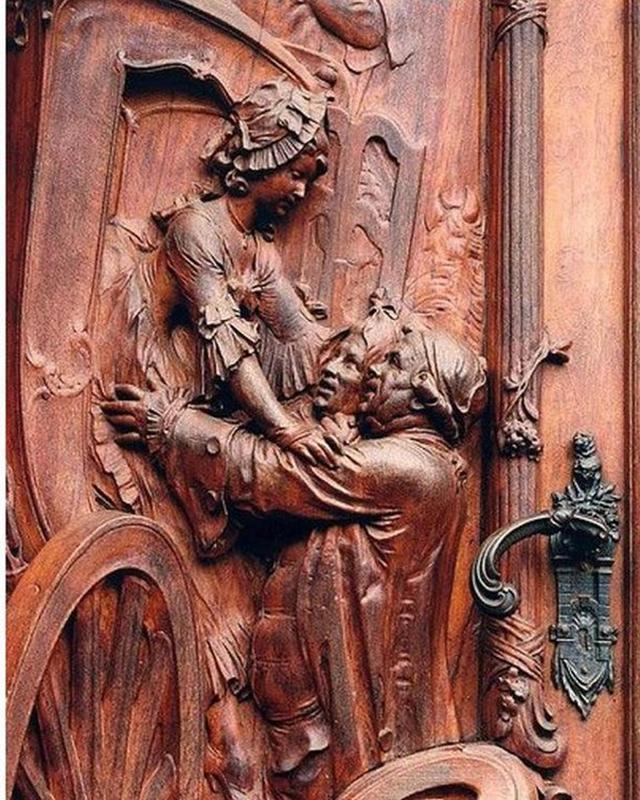
A Fascinating 300-Year-Old Carved Skull From Tibet
In 2011, this carved skull was found in an antique store in Vienna. If you were curious, it is the 300-year-old remains of a Tibetan man. This is what the person who sold it to the Austrian shopkeeper said, at the very least. The skull supposedly came from a man who provided Tibetan monks with medical help, but the veracity of the story has yet to be confirmed. Researchers looked into the skull and learned that it is covered in a script called plants or an Indian script called ranja. However, they couldn’t translate the characters without knowing where it came from.
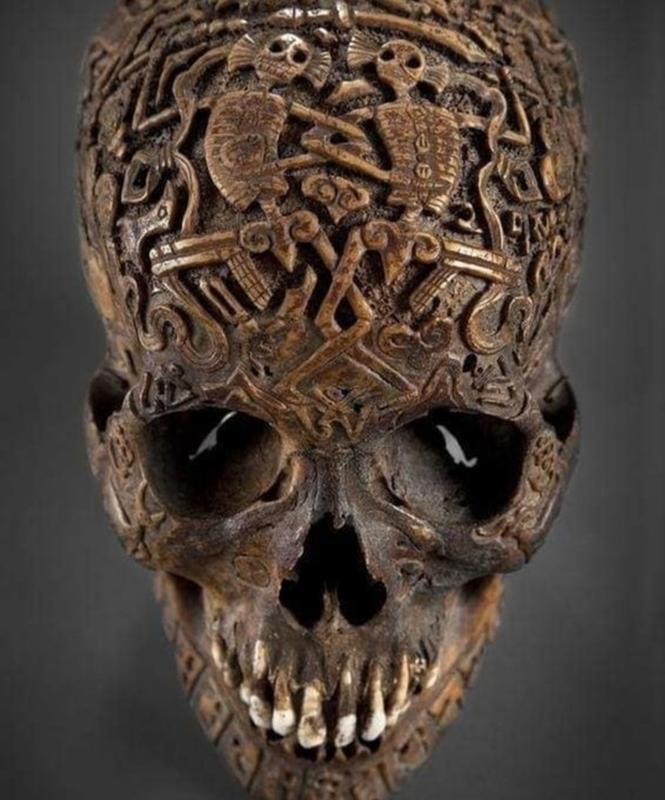
A Restored Fire Fighter’s Bicycle From 1905
Firefighters did not always have their giant trucks. By the turn of the century, some firemen had to patrol on bikes with a hose that could be attached to a source of water. Aside from that, it also has a spot for the crowbar, which can be used to enter buildings, as well as a flashlight to let them see in the dark. According to online sources, these bikes had been built for firemen in the workshops of Birmingham Small Arms in Great Britain. We think that it would be cool to own one of these for a sweet ride. Hopefully, you would not get mistaken for a firefighter!

Incredible Starry Lace-Up Boots From 1890s Belgium
Take a good look at this gorgeous pair of boots! During the late 19th century, there had been a huge change in footwear because of developments in manufacturing and trade across the West. All of a sudden, it was now possible for people to create shows that were not only practical but could serve as performance or evening wear! By the end of the 1800s, shoemakers started to make different shoes for the left and right feet. As technology became more sophisticated, they also started to make shoes that looked good with just about any outfit instead of making one that fits all.

This Terrifying Rattle Kept Kids Busy In The 1930s
Who in their right minds would think that it would be alright to give something like this to a kid? During the 1930s, it was the sort of thing that children were given to entertain them and keep them busy. Yes, it did not matter if it was a choking hazard that freaked them out. The rattles were made using lucite, which meant that they were good for teething regardless of how scary they might look like. In that era, toys were hard to buy. For one thing, the country had been going through the Depression, and these things were expensive! The cheaper alternatives were made with corn cob or cloth.

An 8-Track Cassette Radio Dating Back To The 1970s
If you wanted to listen to some music in the car before 1965, you needed to have a lot of money to install a record player in the car. However, the catch is that it did not make for a nice listening experience since the sound was full of scratching and sniping. It was in 1965 that Ford Motor Company offered an 8-track cartridge player in their sportier vehicles. RCA countered this by releasing their back catalog on cartridges. Made by the private jet industry company Lear Jet Corporation, 8 track cartridges allowed people to listen to their favorite tunes without needing to buy an LP or wait for it to come upon the radio!

A Bunch Of Pinball Machines At The Arcade In 1968
Early versions of the pinball machine sure were beautiful! Players needed to have a lot of skill if they wanted longterm play. In the beginning, the flippers did not face inwards but outwards, so the game was very difficult to play. Of course, this only made young folks even more desperate to be good at it! Kids had fun for hours on end, while arcade owners got a lot of change. After the Second World War, manufacturers such as Gottlieb started making them with flippers facing inwards and placed near each other. Many collectors believe that the old ones are the greatest classic pinball machines ever, however!
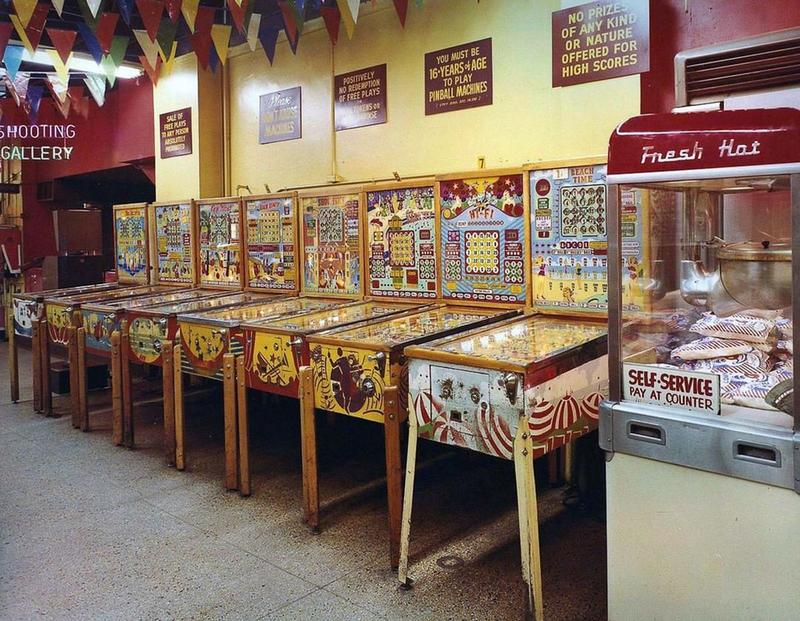
A Rare Labatt Brewing Co. Streamliner From 1947
During the early 20th century, a lot of beer got transported using the railroad system. Labatt changed this when they abandoned rail shipping and started to move their products on the road. The company did not want to transport the beer on old trucks and wanted it to ride in style! This was the reason they commissioned stunning streamlined billboards that could bring their beer from one town to the next. The trucks got phased out in the ‘50s but made a comeback in the ‘70s after one of them was found in London, Ontario. The Streamliner also appeared on a postage stamp from 1996!

The Futuristic 1938 Dymaxion Was Designed By Buckminster Fuller
This 1938 Dyamoxion sure looks like it came straight from a different planet. However, people used to think that it is what we would be driving by the time the 21st century rolled in! It was a concept car made by Buckminster Fuller in 1933. He went with the word “dymaxion,” which is a combination of the words dynamic, maximum, and tension. The original version of the car was made by hand and was supposed to go on display at the 1934 Chicago World’s Fair. However, it got hit by a car on its way to Chicago! While Fuller was able to make 3 more versions of this car, they never did take off. One of them now sits at a museum in Reno, Nevada. The two others, meanwhile, are now in the care of private owners.

The Library Of The Waldsassen Abbey Has Thousands Of Books Bound in Pigskin
Waldassen Abbey might look like a regular baroque church made with huge pieces of stone from the outside, but it is a modern and gorgeous work of art from the inside. The abbey was founded in 1133 as a male-only monastery, although this changed in 1803. Its library comes with gorgeous carved shelves full of thousands of books bound in dark calfskin and white pigskin. A lot of the columns have been carved into the forms of grotesque men. They were supposedly bent into such unusual shapes because of their sins. Looking up at the ceiling will show you a painted ceiling that was added in the 1700s.

A Unique Custom Car Called The 1951 Studebaker Woodie
Studebaker did not make a Woodie for the public in 1951, even though they badly wanted to do it. During the early ‘50s, they hired a designer to design this amazing car and buckled down to bring it to life. It came with a 390-cubic-inch Ford Edsel V-8, so you can bet that the performance of the car will impress you! While they did not get any farther than a prototype, the one that they ended up building is a very cool, rare, and fascinating piece of custom machinery. It has only ever been on the road for a test drive, which explains why it looks like it is fresh off the factory line!

Articles Vally / Balkantimes.press
Napomena o autorskim pravima: Dozvoljeno preuzimanje sadržaja isključivo uz navođenje linka prema stranici našeg portala sa koje je sadržaj preuzet. Stavovi izraženi u ovom tekstu autorovi su i ne odražavaju nužno uredničku politiku The Balkantimes Press.
Copyright Notice: It is allowed to download the content only by providing a link to the page of our portal from which the content was downloaded. The views expressed in this text are those of the authors and do not necessarily reflect the editorial policies of The Balkantimes Press.

